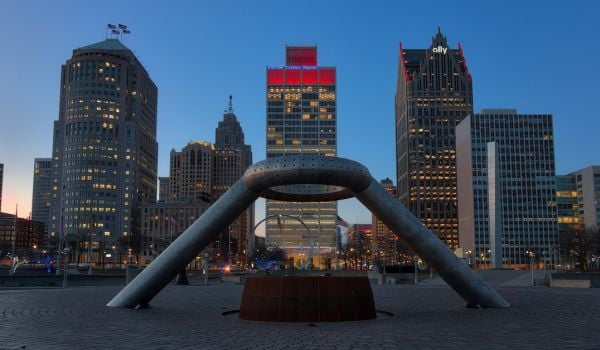Salvaging historical materials from blighted houses set for demolition has long been an urban pastime, but now, the city of Detroit wants to get in the game as part of Mayor Mike Duggan’s blight removal strategy.
Last week, Duggan announced a new pilot salvage program for the city’s North Corktown neighborhood. It’s starting small. The city will solicit bids from local salvaging outfits to find reusable materials in 10 houses set to be demolished. The city’s Building Authority is in charge of the effort.
The initiative, which they hope will launch next month, is part of the Mayor’s broader blight strategy, now with an eye on preservation as opposed to straight-up demolition.
Reclamation isn’t anything new. Practically every city in America — from New York City to Minneapolis — has reclamation shops ready to sell you a piece of old bowling lane you can turn into a kitchen countertop. But what is new is having the city take the lead and mandate salvage as part of a blight clearance program.
“We see the value of deconstruction,” David Manardo, director of the Detroit Building Authority told The Detroit News. “The city supports the concept and sees it in the overall blight strategy.”
If the pilot program is a success, the city is in talks to create a large “reclamation hub.”
The poster child for reclamation in Detroit is Great Lakes Coffee in Midtown. Nearly everything in the shop, from the walls to the floors to the tables — one of which still has bullets lodged inside — were reclaimed from a house in Hamtramck, the small city within Detroit’s city limits.
“I wanted to pay homage to the era of the [Great Lakes] building,” James Cadariu, the owner and founder, told me. “It’s all 110-year-old materials. It would have been just dumped in a whole or burned or whatever.”
Detroit’s Building Authority sees “value in deconstruction,” according to the Detroit News. If the pilot program is a success, the city is in talks to create a large “reclamation hub.” The city’s recognition of the value inside abandoned houses could also be another step toward combatting scrapping. “I find it offensive that people have taken parts of the [Michigan Central] train station or buildings that they assume are abandoned or going to get torn down and then put them in their house,” Cadariu said.
Cadariu is glad the city is finally hip to salvage. “It’s like the city finally recognized or is giving their imprimatur to what we all know has value,” he said. “That’s tremendous. That’s the way we should be thinking about it.”
The Equity Factor is made possible with the support of the Surdna Foundation.

Bill Bradley is a writer and reporter living in Brooklyn. His work has appeared in Deadspin, GQ, and Vanity Fair, among others.








_600_350_80_s_c1.JPEG)








